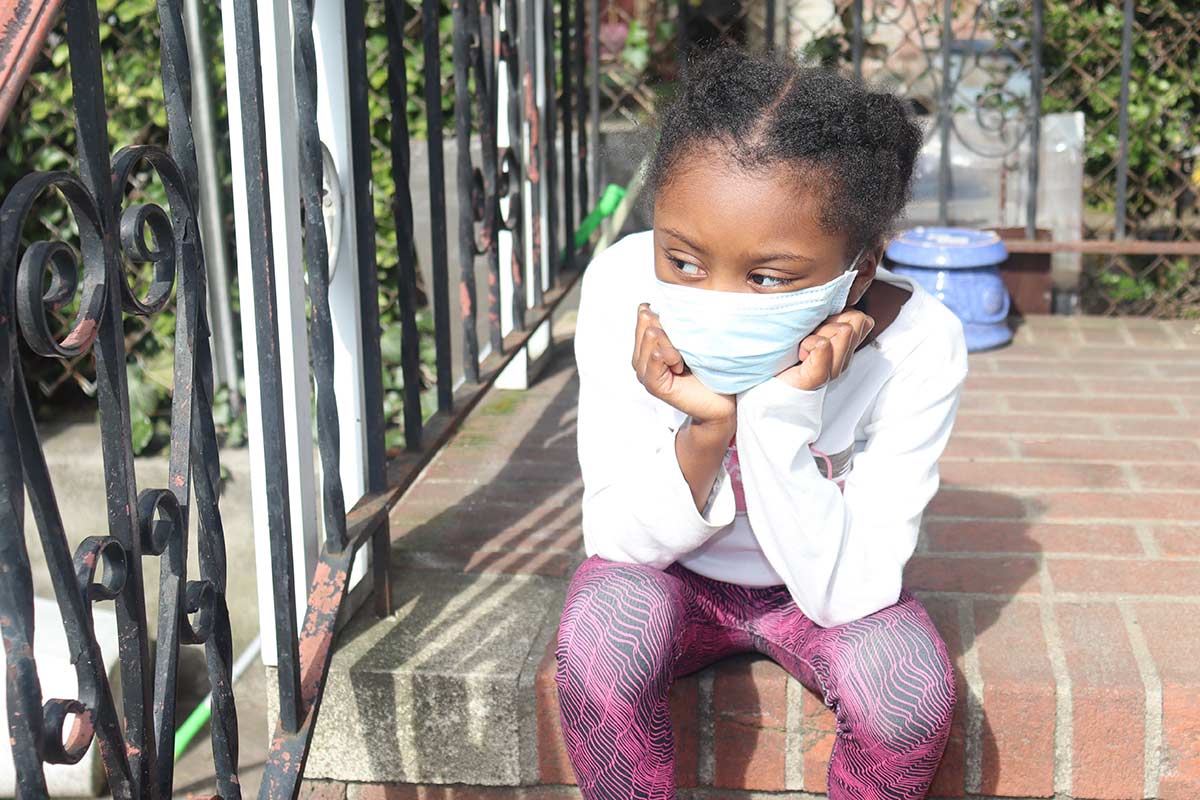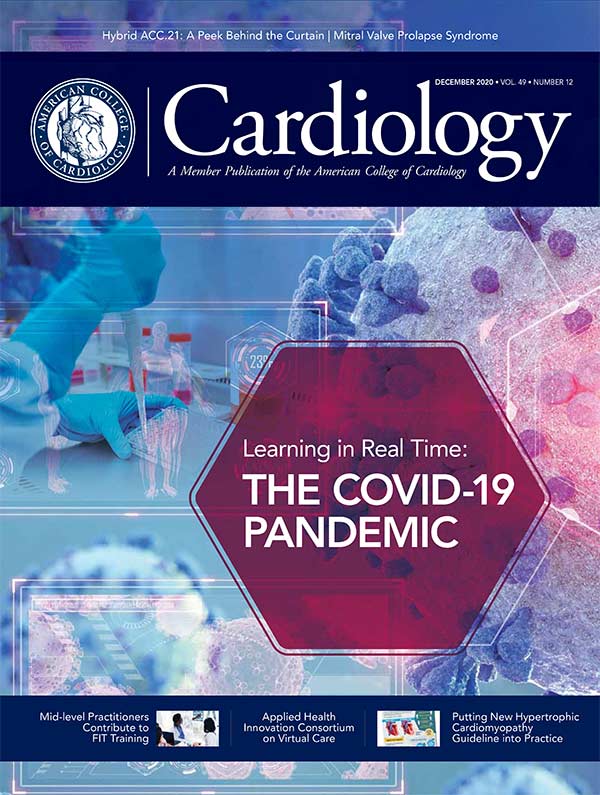For the FITs | Health Care Disparities Highlighted by COVID-19

The COVID-19 pandemic has placed a significant burden on the health care system worldwide. As of Dec. 4, there were more than 66 million cases reported worldwide.1 In the U.S., on the same date, the Centers for Disease and Control and Prevention reported nearly 14 million cases of COVID-19 and nearly 273,000 deaths.2
As data emerge, we are starting to identify risk factors for developing COVID-19 infection, as well as the populations that appear to be at a higher risk for developing complications. As the pandemic continues to affect millions of people worldwide, it is crucial to determine the economic and social conditions contribute to the disease's spread.
Pandemics have never affected everyone equally; in Europe during the 13th century, the bubonic plague disproportionally affected the most impoverished population.3,4 COVID-19 is no different.
Social Determinants of Health and COVID-19

Recently, there has been increased awareness of how social determinants of health affect disease and shape health outcomes. A particular interest has developed in the role of these social determinants on cardiovascular health.5
The World Health Organization defines the term social determinants of health as "the circumstances in which people are born, grow, live, work, and age, and the systems put in place to deal with illness." Some of these social determinants include socioeconomic position, education, access to health care, race/ethnicity, culture, and residential environment.5,6
Lower-income communities and minorities appear to be disproportionately affected by the COVID-19 pandemic. The pandemic presents an opportunity to examine the importance of social determinants of health and ways of improving access to care.
Early reports from cohorts in China and Italy identified some of the risk factors associated with a higher risk for COVID-19 infection: older age, hypertension, cardiovascular disease, and diabetes.7,8 These comorbidities often excessively affect minorities. Hispanic/Latino and Native Americans have the highest incidence of diabetes, while Blacks have the highest incidence of chronic kidney disease and hypertension.9
Studies in the U.S. have found similar results: patients at higher risk for COVID-19 infection are often older and have more underlying comorbidities. A study in the New York City (NYC) area included 5,700 patients and reported that hypertension (56.6%), obesity (41.7%), diabetes (33.8%), coronary artery disease (11.1%), and congestive heart failure (6.9%) were the most common comorbidities in patients hospitalized with COVID-19 infection. Those with diabetes were more likely to require mechanical ventilation or intensive care unit (ICU) admission.10

Another study on critically ill patients with COVID-19 infection admitted to the ICU found that male sex, BMI >40, and coronary artery disease were the most common characteristics of patients with higher mortality.11
Wadhera, et al., describe the variation in COVID-19 hospitalizations and deaths across the different boroughs in NYC. The results show that the number of deaths and hospitalizations in patients with COVID-19 was highest in the Bronx and lowest in Manhattan.10
The Bronx is home to the highest percentage of Black and Hispanic individuals in NYC. Despite having an overall younger population, it was the borough with the most deaths and hospitalizations. It is important to note that the Bronx is the borough with the lowest income per capita, lowest education attainment, and has a high incidence of chronic conditions such as those that appear to pose a risk factor for more severe COVID-19 infection.12
The results by Wadhera, et al., are not isolated; studies in Chicago, Louisiana, and Michigan show Blacks are over-represented among fatalities associated with COVID-19.13 In the U.K., one-third of patients admitted to an ICU due to COVID-19 were from an ethnic minority.14
Future Directions

Inequality in health care is not a new problem; this is an ongoing issue that long predates the COVID-19 pandemic. These inequalities are now more evident, being exposed by the strain in the health care system. As we continue to learn and acquire new information, a first step is to promptly identify those who are more vulnerable and at a higher risk for worse outcomes.
Limited access to health care is an issue for minorities. During this pandemic, minorities have had less access to COVID-19 testing, leading to a higher rate of outbreaks due to undetected cases.15 Implementing expanded access to testing with targeted outreach to neighborhoods with a large population of minorities is crucial. Data show that uninsured rates are higher among vulnerable communities. Implementation of expanded insurance coverage will be vital to mitigating this problem.
Racial minorities and low-income communities often live in highly densely populated areas. They are less likely to be able to work from home, making it challenging to follow recommendations for social distancing.9
Increased access to housing, temporary shelter, or access to hotels for those living in high-density areas can help mitigate the disease's spread by facilitating social distancing and allowing for quarantine of those possibly exposed.15
Health care inequalities stem from long-standing issues that are complex and interrelated. We have an opportunity to act, address them, and mitigate the effects of this pandemic in the most vulnerable. We should strive for COVID-19 to work as a catalyst to promote change and restructure health care policies to address health care disparities.
References
- Johns Hopkins University Coronavirus Resource Center. Available here. Accessed Dec. 4, 2020.
- Centers for Disease Control and Prevention COVID Data Tracker. Available here. Accessed Dec. 4, 2020.
- Duncan CJ, Scott S. What caused the Black death? Postgrad Med J 2005;81:315-20.
- Ahmed F, Ahmed N, Pissarides C, Stiglitz J. Why inequality could spread COVID-19. Lancet Public Health 2020;5:e240.
- Havranek EP, Mujahid MS, Barr DA, et al. Social determinants of risk and outcomes for cardiovascular disease: A scientific statement from the American Heart Association. Circulation 2015;132:873-98.
- Marmot M. Closing the health gap in a generation: the work of the Commission on Social Determinants of Health and its recommendations. Glob Health Promot 2009;Suppl 1:23-7.
- Onder G, Rezza G, Brusaferro S. Case-fatality rate and characteristics of patients dying in relation to COVID-19 in Italy. JAMA 2020;323:1775-6.
- Wu Z, McGoogan JM. Characteristics of and important lessons from the coronavirus disease 2019 (COVID-19) outbreak in China: Summary of a report of 72 314 cases from the Chinese Center for Disease Control and Prevention. JAMA 2020;323:1239-42.
- Haynes N, Cooper LA, Albert MA, Association of Black Cardiologists. At the heart of the matter: Unmasking and addressing the toll of COVID-19 on diverse populations. Circulation 2020;142:105-7.
- Richardson S, Hirsch JS, Narasimhan M, et al. Presenting characteristics, comorbidities, and outcomes among 5700 patients hospitalized with COVID-19 in the New York City Area. JAMA 2020;323:2052-9.
- Gupta S, Hayek SS, Wang W, et al. Factors associated with death in critically ill patients with coronavirus disease 2019 in the US. JAMA Intern Med 2020;180:1-12.
- University of Wisconsin Population Health Institute. County Health Rankings State Report 2020. 2020 New York Report. Available here. Accessed Dec. 4, 2020.
- Yancy CW. COVID-19 and African Americans. JAMA 2020;323:1891-2.
- Khunti K, Singh AK, Pareek M, Hanif W. Is ethnicity linked to incidence or outcomes of covid-19? BMJ 2020;369:m1548.
- Chin-Hong P, Alexander KM, Haynes N, Albert MA, Association of Black Cardiologists. Pulling at the heart: COVID-19, race/ethnicity and ongoing disparities. Nat Rev Cardiol 2020;17:533-5.
Clinical Topics: COVID-19 Hub, Diabetes and Cardiometabolic Disease, Prevention, Exercise
Keywords: ACC Publications, Cardiology Magazine, Fellowships and Scholarships, Internship and Residency, Hospital Rapid Response Team, Patient Safety, COVID-19, Walking, Reading, Hospitals, Community, Aftercare, Workflow, Workplace, Blood Pressure, Rotation, Love, Beauty


